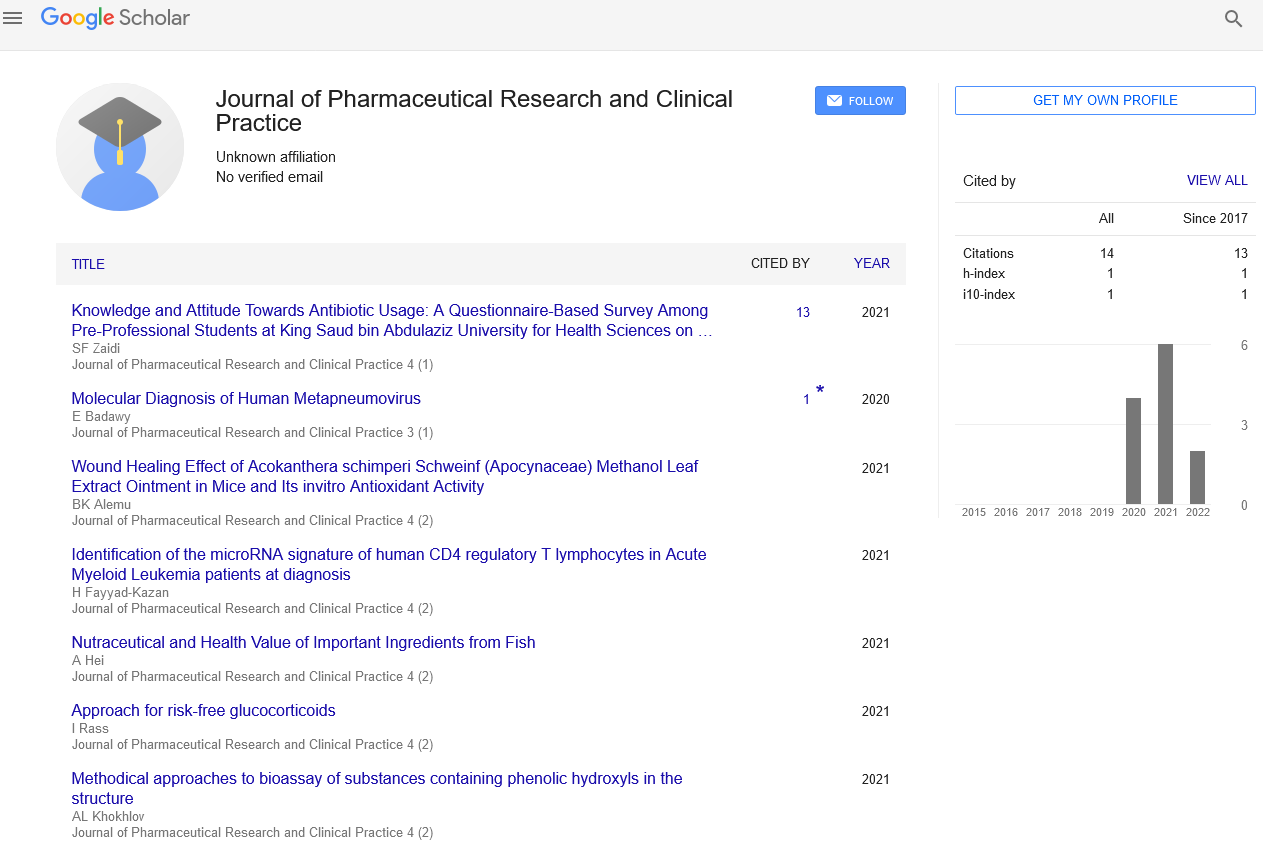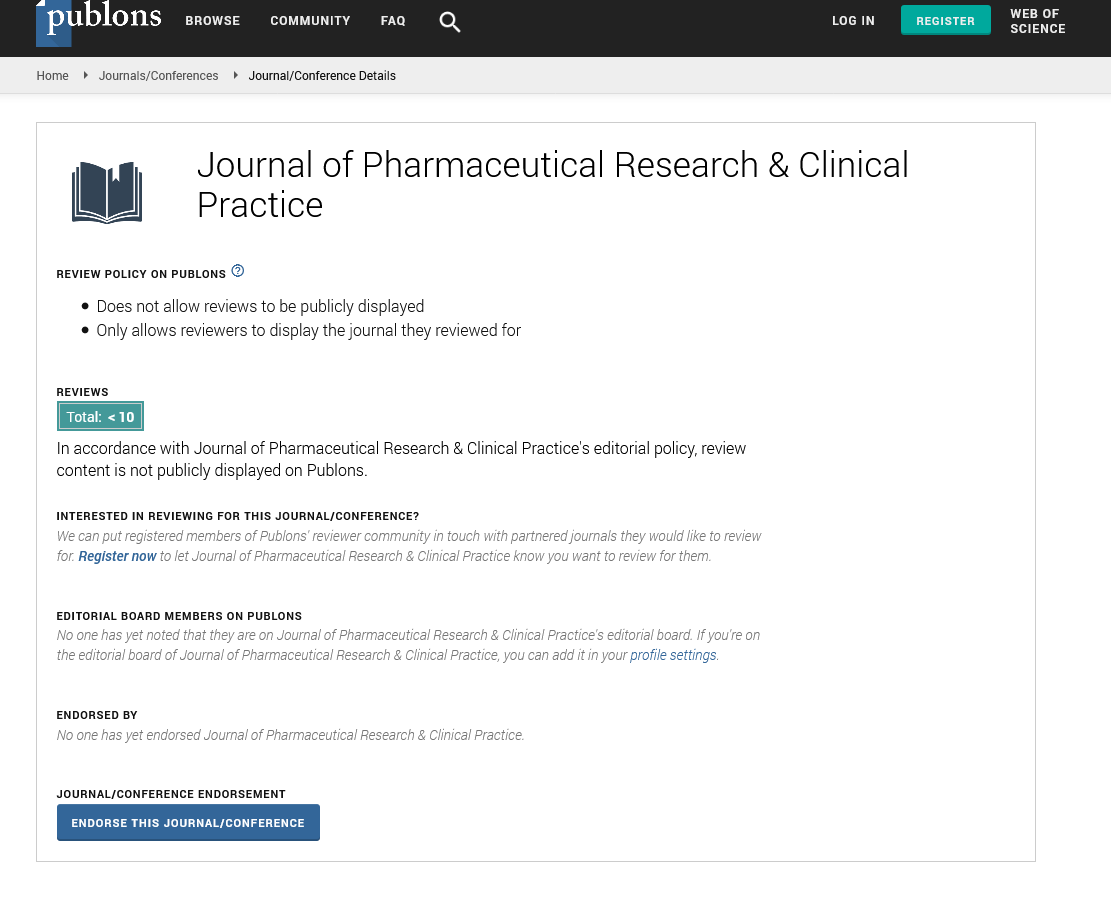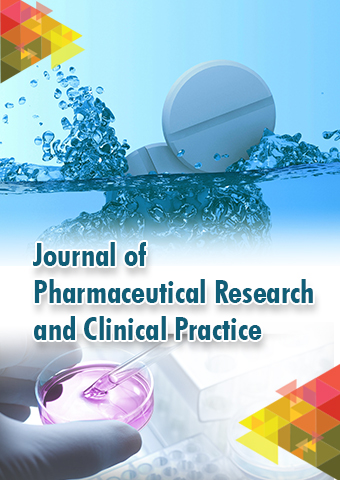Commentary - Journal of Pharmaceutical Research and Clinical Practice (2021) Volume 4, Issue 3
Use of Stearic Pharmaceuitcal Chemicals in the Preparation of Cemen
- Corresponding Author:
- Prashant Sharma, Department of Civil Engineering, GLA University Mathura, India, E-mail: prashaantsharma@gmail.com
Abstract
This paper addresses the influence of Stearic Acid (SA) on setting time and compressive strength of cement mortar. Till now, researcher used SA as a grinding additive (powder form) with cement during manufacturing of cement. Test have been conducted using 0.25%, 0.5%, 0.75%, 1%, 1.5%, and 2% of SA by weight of cement. The little change in compressive strength under different curing condition was tested and performed. For testing compressive strength, cubes were casted at a curing age of 3, 7 and 21 days. Initial and final setting time with different proportion of SA has been tested. We have concluded that SA reflects retarding properties when used as an admixture with OPC. It caused set retardation of cement, depending upon the proportion of SA used. Reduction in setting time begins from 0.5% SA content and flash setting occurs at 2.0% SA content. So, SA can be used as an effective retarder who shows a slight change in compressive strength of cement mortar.
Keywords
• Grinding aids • Admixtures • initial and final setting • Compressive strength • Water absorption • Stearic acid
Introduction
India is the second largest producer in the world (280 million metric tons) per year followed by China. China is the largest producer in the world (2500 million metric tons) per year. Cement is a binding material which is used as adhesive for construction purpose in different ways. Cement physical properties dependent on its constituents and grinding aid. Different grinding aid in the form of solids and liquids added at time of manufacturing of cement. Liquids grinding aid are glycol, aliphatic amines and amine alcohols. The oleic acid stearic acid and myristate. Compressive strength and grind ability of cement with the fatty acid were examined. Effect of the Streic acid as grinding aids were examined the performance of cement including setting time, specific surface and compressive strength at three, seven and 28 days. Saturated oil acids like myristic acid, lauric acid and stearic acid increase the compressive strength of the normal concrete. Addition of a small amount of stearic acid as grinding aids enhances compressive strength up to a certain limit. Addition of oil into cement mortar observed increasing the setting time and reduces compressive strength. In general, addition of crude oil reduces the compressive strength of concrete. On addition of nitrogenous compound and super plasticizer like tartaric acid and carbohydrates in cement mortar mix intensify the early compressive strength. Incorporation of monomers (carboxyl group) and copolymers (EDTA, styrene) reveals the property of set retarder when used in conjunction with cement paste. Polymer latex increases hydration of cement by adsorbing polymer particles on hydrated cement surface.
Significance of the System
The aim of this research is to study the effect of SA as an admixture in cement mortar paste. Till date researchers, manufactures and engineers used SA as a grinding add-on during production process of cement to minimize the energy consumption. In this research effect of SA as an admixture has been examined. Experimental test performed like setting time, compressive strength and water absorption test have been executed to study the effect of SA as an admixture with varying percentage as 0.25%, 0.5%, 0.75%, 1%, 1.5%, and 2% by dry weight of cement.
Discussion
It was observed that when SA is used as an admixture in cement, it shows higher retardation rate than it used as a grinding aid. Compressive strength was slightly lessened as compared to fresh cement mortar. Due to insoluble property of SA in water it lead to high rate of hydration as SA fills the voids of cement mortar. It was observed that beyond the addition of 0.5 percentage of SA reduces the compressive strength at the cuing stages of three, seven and 28 days. As compared to previous research it was observed that SA leads to less compressive strength as an admixture to as a grinding aid and have more setting time as shown. Maximum initial and final setting time was found at 0.75 percentages of SA by weight of dry cement valued as 151 and 260 minutes.
Conclusion
From the experimental analysis, the following conclusion can be made Stearic acid shows the retarding affects when mixed with cement paste but there is no direct relationship between the SA percentage and setting time. The considerable change was found in setting time at 0.75% of SA blended with cement mortar. Retarding effect was obvious while percentages of SA lowered the value of compressive strength significantly. The optimum value of compressive strength was found at 0.5 percentage of SA by weight of cement at 28 days of curing.


